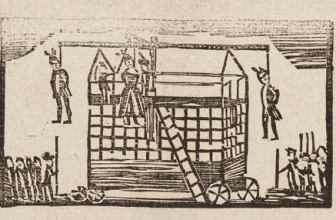
You turn on the faucet, water comes out. What you don’t use runs down the drain and disappears. It feels simple, but every drop of water, whether coming in or going out, depends on a vast and complex system that keeps it safe for humans and the environment.

It might seem invisible, but hundreds of public servants and billions of dollars in infrastructure work every day to:
- treat and transport water to your home,
- manage and dispose of your wastewater (sewage),
- direct stormwater away from neighborhoods, and
- preserve and restore natural streamways.
Here are four key ways Johnson County manages water today!
Water at Your Faucet
Today the water that reaches your tap has gone through an extensive, multi-step treatment process. Early Johnson Countians relied on creeks and wells for water to use and consume. Later, as suburban development began, some developers built small water systems. These were eventually purchased by the Kansas City Suburban Water Company in Mission, but residents grew frustrated as quality declined while bills increased.
A citizen-led initiative created Water District No. 1 in 1957. This independent, nonprofit utility was founded to provide reliable drinking water to a growing suburban population. Today, 2,800 miles of pipe deliver water to about a half-million people spread out over 60% of the county. WaterOne’s award-winning area treatment facilities are consistently recognized as producing the best tasting water in Kansas.

Elsewhere in Johnson County, rural water districts and municipal water plants treat drinking water. Gardner, Edgerton, and Spring Hill, for example, receive water from the Hillsdale Reservoir. Olathe manages and treats its own water supply. As of 2020, more than 700 county households still rely on private wells for their water.
Water Down Your Drain
Until after WWI, most Johnson Countians used privies or outhouses for sewage. Such facilities could become unpleasant and needed to be periodically emptied.
As suburban homes appeared, developers often installed individual septic systems. But crowding and poor conditions meant that one in three systems failed within three years in the immediate post-WWII era.

In 1949, Johnson County opened its first wastewater treatment facility, the Nelson Treatment Complex in Mission, serving 15,000 people. Today six wastewater facilities handle sewage for 500,000 residents in 17 cities across the county. Wastewater goes through a multi-step process: solids are removed, dried, and disposed of or repurposed as fertilizer for livestock crops; liquids are clarified, treated, and returned safely to local streams and rivers. Every year, Johnson County Wastewater treats an average of 18 billion gallons of wastewater – that’s approximately 50 million gallons each day!
Not all household are on this system. Olathe treats two billion gallons annually through its own facilities. Septic systems, now much improved, are still common in the county: as of 2024, there were over 9,600 septic systems in use.
Water in the Gutter
In 1990, Johnson County Public Works launched the Stormwater Management Program to help cities better handle rain and floodwaters from streets and parking lots. Their efforts built on decades of municipal management of stormwater.

Unlike sanitary sewers, stormwater in Johnson County is not treated before returning to rivers in creeks, so whatever runs off of pavement and yards and goes into roadside gutters and storm sewers is likely to turn up in nearby streamways. Despite potential for runoff and contamination of streamways, Johnson County’s system meets the national standard for stormwater.
County staff work with city stormwater officials in 20 cities, securing grants, maintaining floodplain maps, and improving infrastructure. To date, $200 million in improvements have been made through the Johnson County’s Stormwater Management Program. Community programs like “Contain the Rain” help prevent runoff by refunding the cost of rain barrels and native plantings at homes in participating cities.
Water in the Streams
With over 1,800 miles of natural streamways, Johnson County is a well-watered landscape. Water flows here in many forms, ranging from small creeks to rivers. The county is also home to 13 small reservoirs and lakes, and numerous man-made ponds dot the landscape.
Johnson County Park and Recreation District (JCPRD) has actively managed some floodplains in its parkland and conserved natural settings like wetlands, streamways, and lakes following its “Comprehensive Plan for the Development of Future Parks,” released in 1979. Today JCPRD manages 400 acres of water and 1,300 streamway park acres along more than 70 miles of streamways. Parks staff coordinates with city park systems, conservation groups, nonprofit organizations, and volunteers to effectively manage water.

Most of Johnson County’s creeks and streams originate in the county, putting JCPRD in a unique, upstream position to positively influence watershed restoration. JCPRD takes the role seriously and has received national recognition for its natural resources management.
It’s All Connected
Although we use water every single day, we rarely stop to think about where it comes from or where it goes. Drinking water, wastewater, stormwater, and streams may seem separate, but they are all interconnected parts of one system.

Want to learn more? Visit the Johnson County Museum on Saturday, September 13 during our quarterly Free Day! Explore the Water Resource Fair with partners including WaterOne, Johnson County Wastewater, Johnson County Public Works, Olathe Water Department, and The Parks and Recreation Foundation of Johnson County!
And don’t miss the Museum’s special exhibit, Ripples: Water Community, and You. Plan your visit at JCPRD.com/Ripples!
Thank you to our exhibit sponsors!
We’re grateful for the generous support of Black & Veatch, Burns & McDonnell, HDR, The Parks & Recreation Foundation of Johnson County, and TREKK Design Group. Their partnership helps us bring the vital story of water to life — for you, your family, and our entire community.






